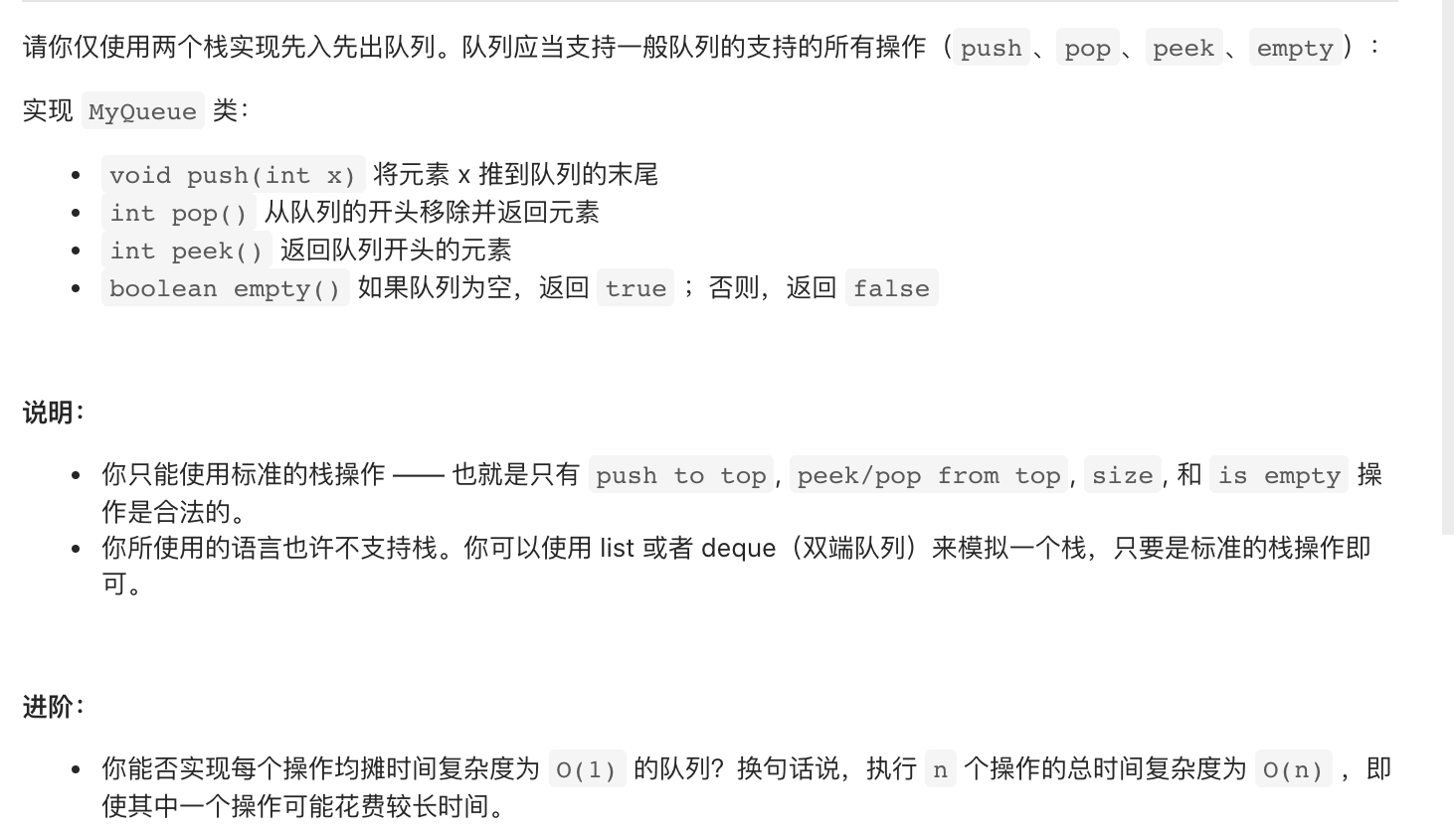
class MyQueue {
public:
stack<int> stack1;
stack<int> stack2;
/** Initialize your data structure here. */
MyQueue() {
}
/** Push element x to the back of queue. */
void push(int x) {
stack1.push(x);
}
/** Removes the element from in front of queue and returns that element. */
int pop() {
if(stack2.empty())
{
while(!stack1.empty())
{
stack2.push(stack1.top());
stack1.pop();
}
}
int result = stack2.top();
stack2.pop();
while(!stack2.empty())
{
stack1.push(stack2.top());
stack2.pop();
}
return result;
}
/** Get the front element. */
int peek() {
if(stack2.empty())
{
while(!stack1.empty())
{
stack2.push(stack1.top());
stack1.pop();
}
}
int result=stack2.top();
while(!stack2.empty())
{
stack1.push(stack2.top());
stack2.pop();
}
return result;
}
/** Returns whether the queue is empty. */
bool empty() {
if(stack1.empty()&&stack2.empty())
return true;
else
return false;
}
};
/**
* Your MyQueue object will be instantiated and called as such:
* MyQueue* obj = new MyQueue();
* obj->push(x);
* int param_2 = obj->pop();
* int param_3 = obj->peek();
* bool param_4 = obj->empty();
*/
